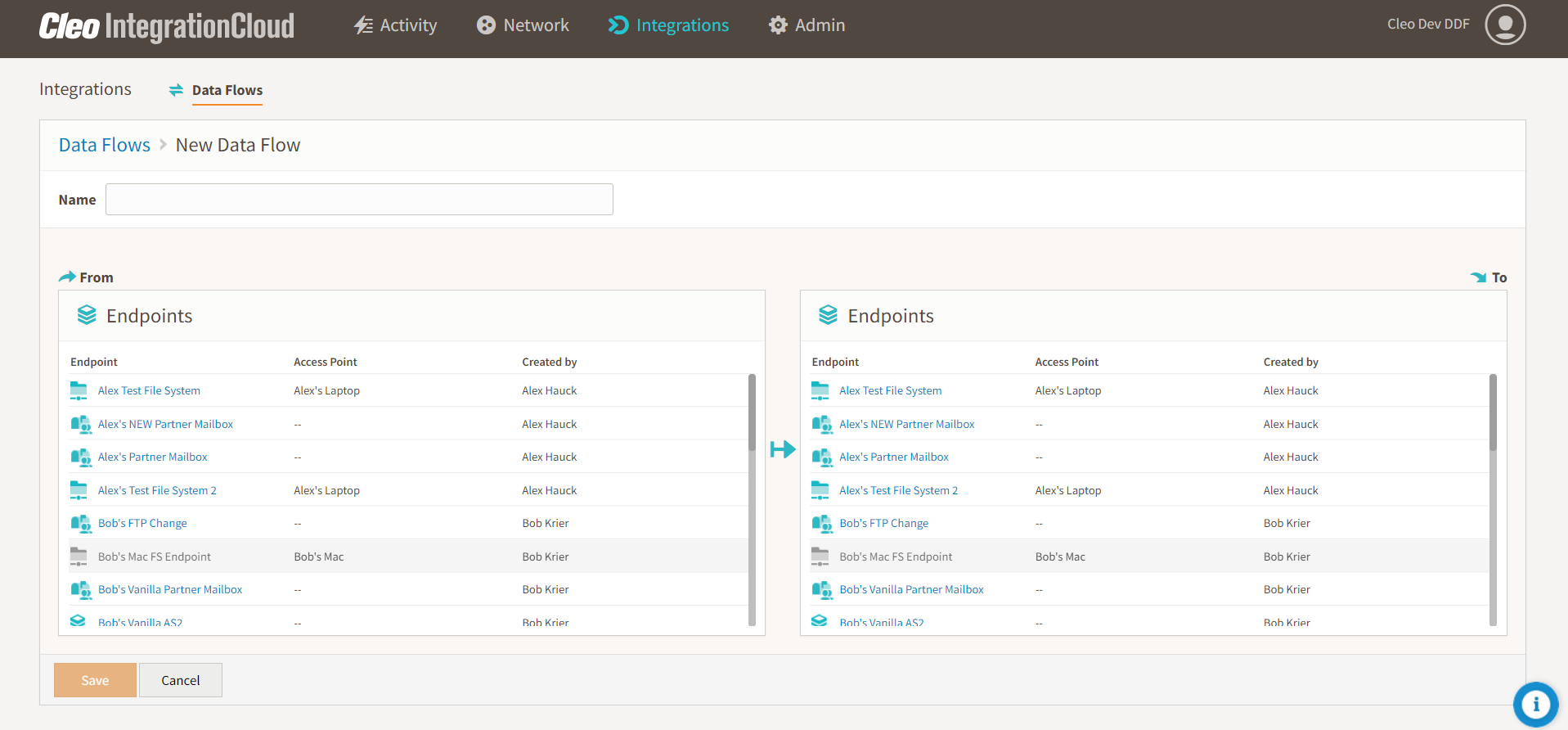Working with Data Flows
A data flow connects two endpoints so that data can be transferred between them. Typcially, a data flow consists of a source endpoint, some optional data processing you specify, and a destination endpoint. The type of processing that is possible in a data flow depends on the protocols of the endpoints.
-
Go to the Integrations > Data Flows page and click the Add Data Flow
button.
 The New Data Flow displays.
The New Data Flow displays.
- Give your data flow a name to identify it throughout the system.
-
Select an endpoint from the From Endpoints list. This will be your source
endpoint.
There are several kinds of endpoints you can choose from:
- File System
- AS2
- FTP
- SFTP
- Partner Mailbox
- Transformation
You can choose to filter your From endpoint so that only files that meet your criteria are transferred.Depending on the type of endpoint you select, you can specify additional information about paths or commands. For example, for File System endpoint, you can click the pencil icon to enter path information directly. If you choose a Transformation endpoint, there is no further configuration possible from this page. See Understanding integrations that include transformations for more information.
If you choose a Transformation endpoint, there is no further configuration possible from this page. See Understanding integrations that include transformations for more information. -
After you have chosen an endpoint from the list (and specified path
information), click Select to make it the source for the
data flow.
After you click Select, depending on the endpoint type, you can specify additional information (path and commands) for the endpoint.Note: Any information you enter here applies only to this data flow.
-
Select an endpoint from the To Endpoints list. This will be your destination
endpoint.
Selecting a destination endpoint is the same as selecting a source endpoint.If you choose a Transformation endpoint, there is no further configuration possible from this page. See Understanding integrations that include transformations for more information.
- If you select File System endpoints for both From and To, you can specify whether to move or copy files. In either case, files with the same names on the destination endpoint as those being moved or copied are overwritten.
- Optional - Click Add Schedule to display the Schedule dialog box, where you can set up a specify when and how often the data flow runs. See Scheduling data flows.
- Click Save.
